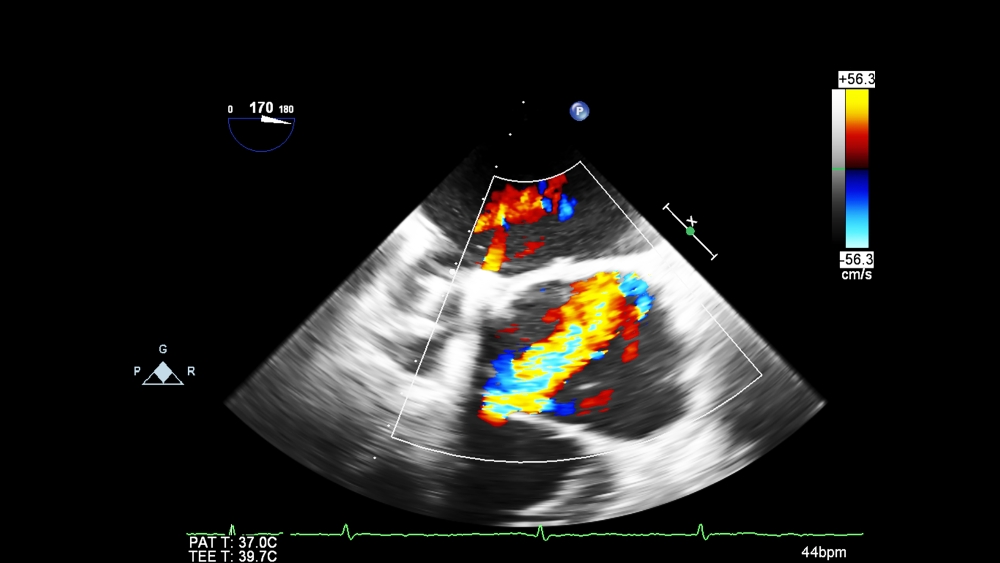Transesophageal Echocardiogram
(TEE)
Overview
A transesophageal echocardiogram (TEE) is a variation of the echocardiogram performed in patients where a traditional echocardiogram may not have provided enough information.

What you can expect
The process of a TEE procedure involves the following:
- Before the procedure, it’s important to avoid eating for six hours; daily medications are usually taken with sips of water.
- As the procedure starts, you’ll be given a topical spray to numb your throat and be placed under heavy sedation to avoid discomfort during the test.
- During the procedure, your doctor will use an echotransducer, a device that produces high-frequency sound waves, and place it down your food pipe (esophagus) to look closely at your heart valves and chambers to check for abnormalities.
- Since heavy sedation is used for this test, you’ll be required to have a responsible person accompany you home, restricted from driving for the remainder of the day, and told to take it easy at home.
Risks
After a TEE, most people often feel groggy for a few hours and have a sore throat that can be treated with lozenges. Small risks are associated with this test, including reaction to the sedative, or rarely, loss of a tooth, damage to the throat or esophagus, or difficulty breathing.